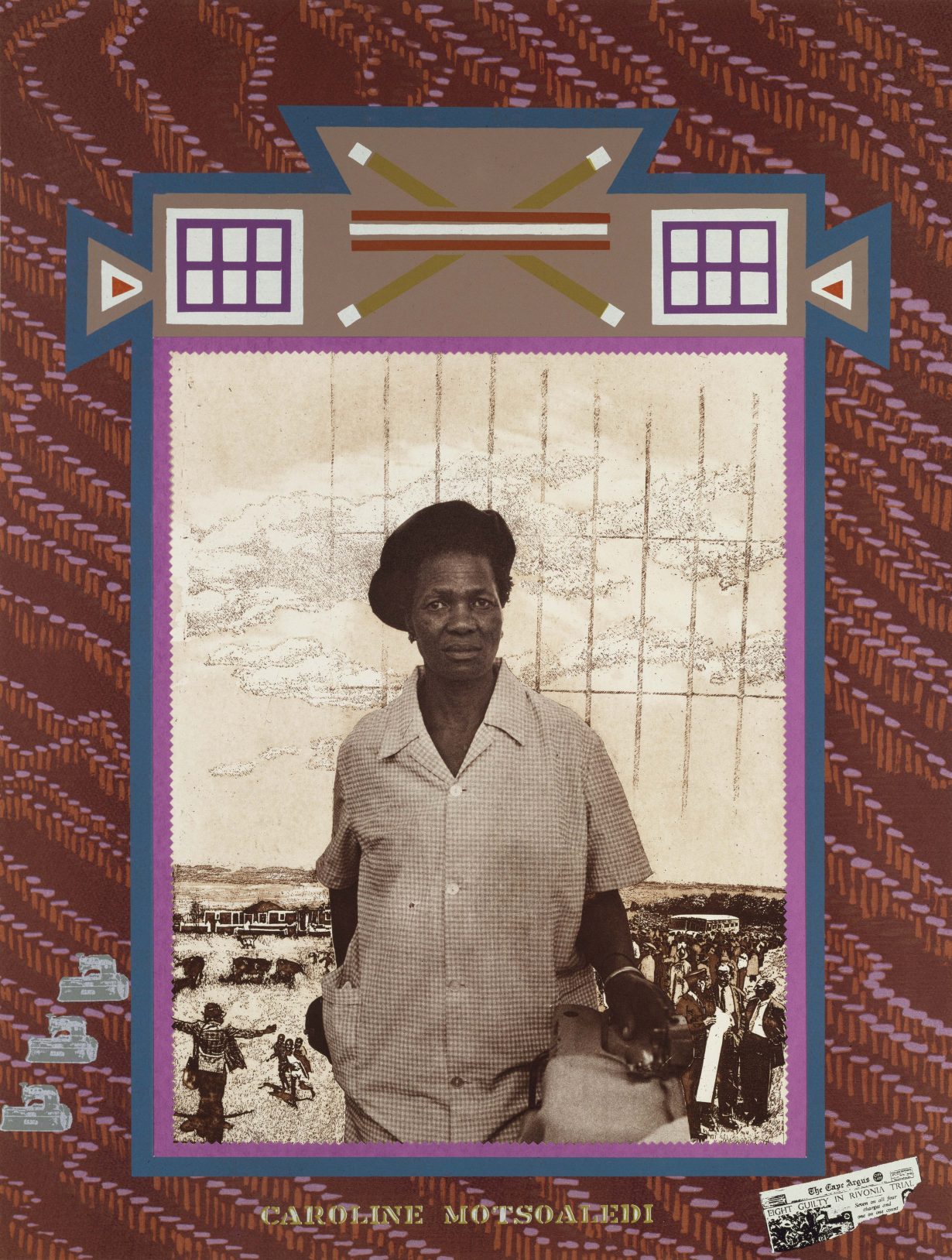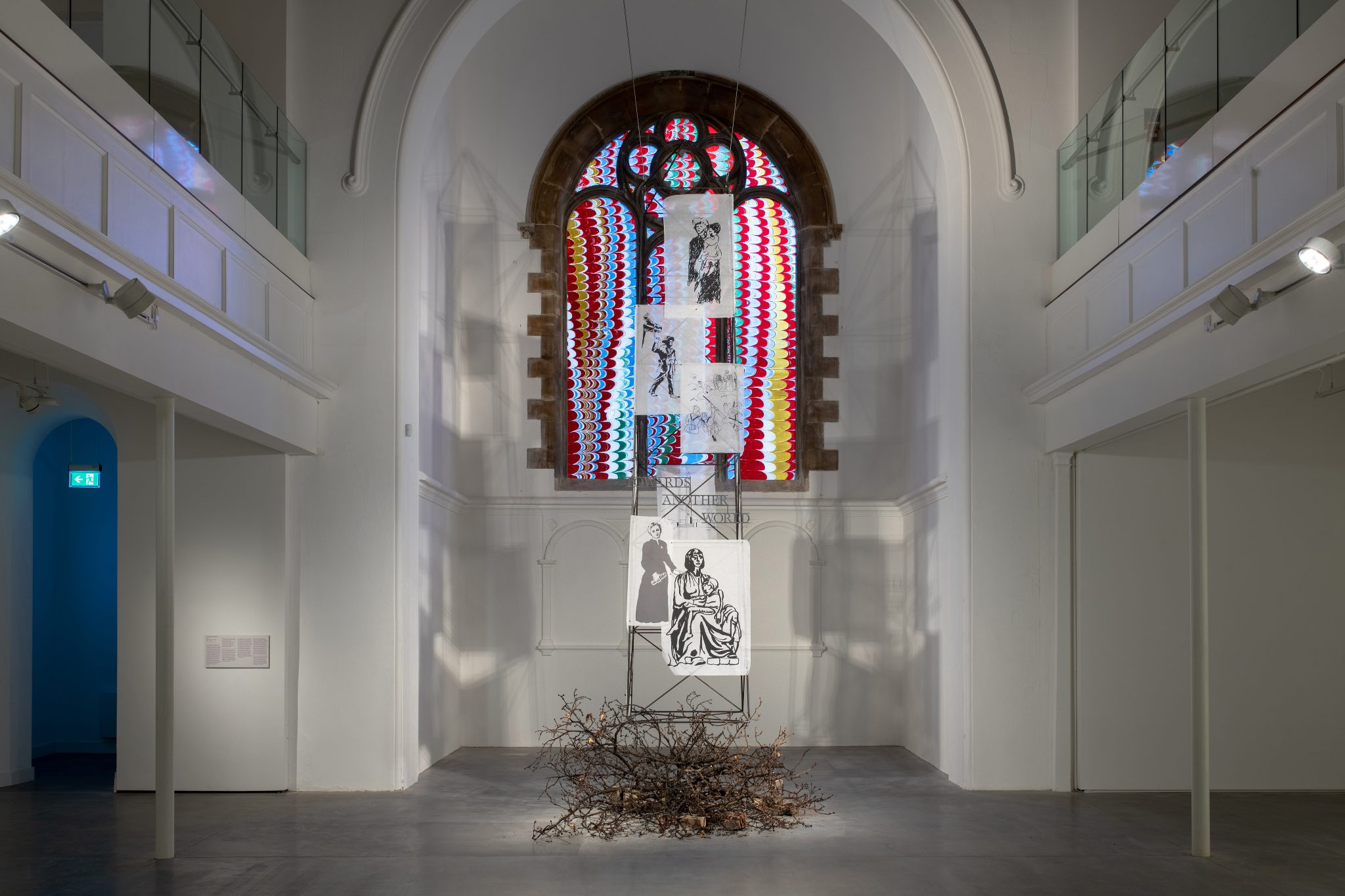A new show at The Box, Plymouth presents a careful overview of a career dedicated to memory and colonial injustice
Sue Williamson was seven when her family moved from the English Midlands to South Africa in 1948. By the 1980s she was making a name for herself in an apartheid state, her work carefully but urgently calling for change and centring the women of colour who were driving it. Four decades later, she returns for her first institutional show in the UK with a repertoire of work ranging from photography to sculpture and video, dedicated to memory and colonial injustice, and their sociopolitical manifestations and misrepresentations.
The show opens with her breakthrough work, A Few South Africans (1983–87), a series of portraits of key women in South Africa’s liberation struggle. Like enlarged postage stamps, each sepia photo etching is framed with coloured borders that are detailed with small figures or signifiers: shooting stars dot a textured, terrainlike purple border (for singer and civil-rights activist Miriam Makeba); a torn-off newspaper headline (for Caroline Motsoaledi, married to one of the Rivonia defendants jailed alongside Nelson Mandela; she returns for a moving 2012 colour portrait photograph in the series All Our Mothers, 1981–2022). They feel grand and shirk the retro lure that sepia can produce for a soft vibrancy that longs for their vindication in the triumph they await.

In a modest space, the show moves through Williamson’s work expressively rather than by any stricter chronology or theme, contrasting largescale installation with intricate photographic detail, deferring flashy arrangements to a neat and generous presentation. In Colouring In (1992), line drawings from a children’s colouring book overlay photographs of the Boer War (between British colonisers and Afrikaners, 1899–1902), apartheid-era images and Afrikaans text – stand back and the layers blur, depictions of history becoming an array of increasingly abstract outlines.
In Towards Another World (2023), an installation produced for this show, figurative illustrations of the Boer War adorn white sheets pinned to an obelisk framework of steel struts. It is a spare interpretation of the nearby Plymouth Boer War Memorial, suspended, foundationless, a metre above an arrangement of wintry branches and bricks, collapsed from nowhere discernible. The grim ‘scorched earth’ war tactics of the British are recalled: corners of leaves are blackened and violently turned as if by flame; the twigs and brick are charred; leaves, rather than attached to branches, are skewered to the ends of them. Though, viewed front-on here at The Box, the obelisk is backgrounded by this former-church building’s bright stained glass. And so the show’s titular betweenness is felt most keenly across works that sit decades apart. Williamson is almost constantly fluctuating between funereal darkness and an enduring vitality, reaching to the skies from the ashen ground.
Between Memory and Forgetting at The Box, Plymouth, through 4 June
